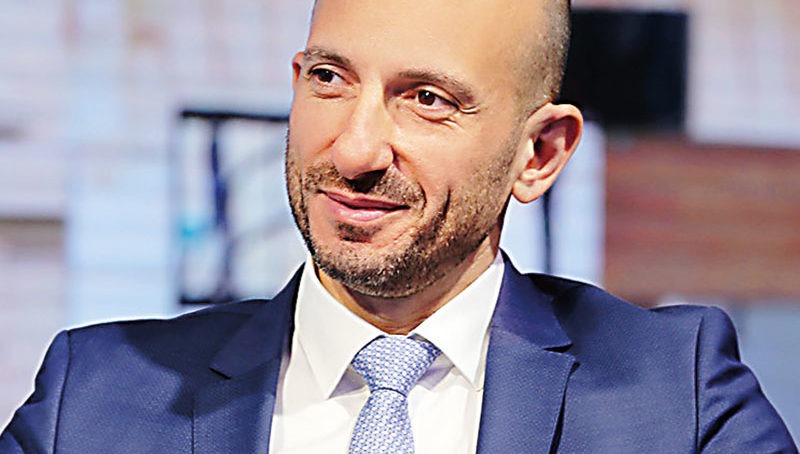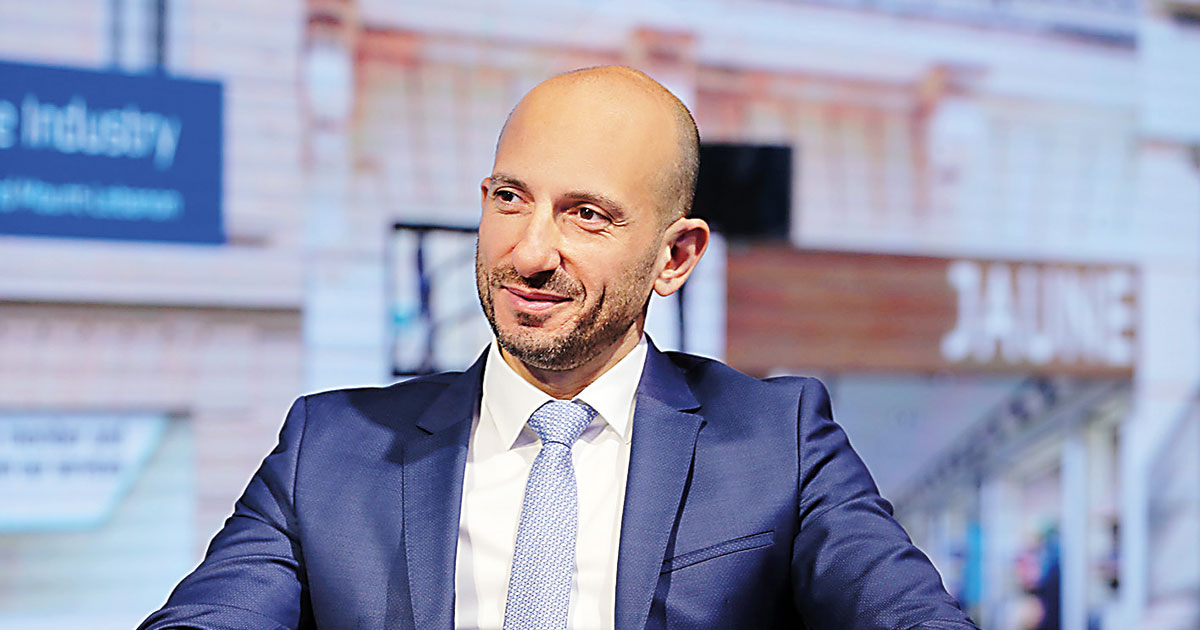< Read Before: A comprehensive perspective


The president of the Lebanese Franchise Association (LFA), Yahya Kassaa, talks to HN about some of the most interesting local and international franchises currently in operation, the top-performing F&B brands, the challenges operators face, alongside possible solutions, and the association’s past and future targets
What objectives did the LFA set itself last year?
The year was dedicated to laying down the foundations of an action plan that would comprehensively address the issues affecting our industry. The plan’s outline is defined around four areas of activities: Networking and Capacity Building; LFA Initiatives; National Advocacy; and Research & Publications. In 2018, the LFA undertook specific actions in each of these areas, either by setting the pillars of new projects for the coming years, or by revisiting existing initiatives.
For instance, the new format of the LFA’s annual business conference and franchise ‘Town Festival’ gave us the opportunity to reconnect with the roots and spirit of the Lebanese Franchise Industry and showcase the added value of its diversity and offering. Most importantly, the conference allowed us to demonstrate the LFA’s deep impact on the Lebanese economy by having our main partners, such as banks, insurance firms and travel companies, represented alongside the LFA to reinforce the message that ‘we are a community….and we grow together as a community’.
Based on insights drawn from data compiled through the LFA’s ‘Retail Activity Indicators Reports’, the LFA’s membership committee will implement additional activities to increase the resources available to our members and to those wishing to join our community.
The franchise survey, the Retail Indicator, the 2020 World Franchise Council and LFA outreach programs to connect with governmental and syndicate bodies, are all examples of the seeds we are nurturing to not only promote the franchising model, but most importantly, to create favorable conditions for the conception of new companies and ideas that can generate jobs and wealth in the community.
How would you describe the state of the F&B market?
Lebanon has always been an incredible incubator for new ideas. Entrepreneurs have continuously been ready to ‘push the envelope’, to innovate and go beyond the ordinary, while Lebanese consumers and visitors have been happy to support creativity and try new things. It’s a win-win situation, provided we can create the conditions needed for their efforts to bear fruit.
With this in mind, the LFA Board is implementing specific activities aimed at ensuring that the education and workforce systems are aligned with the needs of the franchising sector. This alignment is critical to develop homegrown talent, retain the best and brightest workers, and attract talented individuals to the franchise industry and the Lebanese economy as a whole.
The 2019 training program, elaborated in collaboration with the Association of Businessmen for Support and Development (IRADA) and the Syndicate of Restaurants, Cafes, Night-clubs and Pastries in Lebanon, is an example of partnerships we have established in order to nurture capacity-building across the value chain and provide better and richer employment opportunities. These activities also remain at the core of member-focused programs, such as dedicated training sessions intended to increase LFA members’ and potential candidates’ skills and knowledge, when it comes to the strategic development and tactical management of their business.
How are Lebanese brands faring when compared to other registered brands? What are some of the obstacles they face and what solutions have been suggested for 2019?
It is surprising how well Lebanese brands managed to perform, despite having minimal structural resources at their disposal when benchmarked against what other countries have put in place to support their economies. This success is a testament to the Lebanese spirit, even more so when you consider the negative trend in our country’s brand equity.
Our association undertook specific initiatives to overcome these obstacles by providing a platform for local businesses to connect with opportunities through participation at world-class franchise events, such as the World Franchise Council and the Franchise Road Show. Both of these gave our members an opportunity to display their brand in strategically located regions, such as the US, Mexico, France, Russia, the Gulf and Australia, all of which also happen to have a thriving Lebanese diaspora, interested in establishing business ties with their country of origin. However, nurturing these ties can only be sustained if we manage to recover the almost magical aura our country benefited from throughout its history. Reclaiming that heritage is one of the objectives we have set ourselves through the ‘Reviving the Tyrian Purple’ project, a color invented by our ancestors that redefined the trade routes and civilizations of their era.
The positive contribution of their innovations to our country’s brand equity is palpable even today. We hope, therefore, that this initiative will serve as a magnet to unite our communities in the shared interest of improving the business environment for those seeking to invest in our country and, ultimately, to improve the quality of life for all Lebanese.
Who made it on to the list of top
20 local F&B and restaurant franchises in 2018 and what was the qualifying criteria used in the decision-making process?
Given that many of the large franchises today started with a small, one-store concept, the LFA does not focus on ranking. These brands were able to grow because they had at their disposal the skills, and human and financial resources, along with many other factors needed to promote innovation and an enterprising culture.
Creating and developing a ‘success matrix’ is what the LFA focuses on. The role we play is one of active engagement with all stakeholders in the economy to ensure that the conditions needed for an ‘entrepreneurial ecosystem’ to thrive are present, while at the same time providing a framework of activities and programs aimed at empowering our members and potential franchisees with the tools and resources they need to leverage existing opportunities.
Which foreign franchises were imported and which Lebanese franchises were exported? What conclusions can we draw from this information?
Lebanon’s main export destinations remain in the Gulf and the Middle East, namely, Dubai and Abu Dhabi in the UAE, followed by Riyadh and Jeddah in Saudi Arabia and Doha in Qatar. Our homegrown concepts are also finding success in non-oriental countries, with implementations in Paris, London and New York, for example.
F&B brands such as Em Sheriff, Zaatar w Zeit, Casper & Gambini, Crepaway, Semsom and Patchi are some of the international success stories that come to mind. The need to export our concepts to larger foreign markets is more pressing than ever, as research indicates that the disposable income of Lebanese consumers has been significantly affected by the global economic downturn and regional challenges, which have resulted in our economy shifting toward lower-priced goods, instead of the traditional high-value activities that generate wealth and encourage consumption. This is a troubling trend for our economic position as a country, and it reinforces our resolve and the importance of expanding our efforts and resources in activities that would offset and reverse the unfavorable conditions affecting all our members, as well as other industries in the economy.
What are the most recent statistics you can share relating to these trends?
Based on the 7th edition of the LFA-CCIABML ‘Retail Activity Indicators – First Half of 2018’, in the first half of 2018, the overall retail sales performance indicator for the nine categories of goods and services covered by the report was 9.46 percent lower than its level in the preceding half year and 0.92 percent higher than its level in the first half of 2017. That indicator remained 13.14 percent below its 2012 base year level.
How did the results compare in the categorical sales performance indicators?
Of the nine categories of consumer goods and services, the sales performance indicators of six categories declined in the first half of 2018 when compared with their levels in the same period of 2017. By order of the magnitude of the indicator decline, these categories are: sports and hobby goods; clothing and fashion; luxury goods; hospitality services; cosmetics; and tourism services.
The sales indicator for the sports and hobby goods category fell by 11.66 percent in the first half of 2018 compared to the same period of the preceding year; clothing and fashion sales by 10.67 percent; the luxury goods category by 9.85 percent; hospitality services by 5.22 percent; cosmetics by 4.56 percent; and tourism services by 0.83 percent. The sales indicators for three categories of retail goods and services increased in the first half of 2018 compared to those during the same period of 2017.












